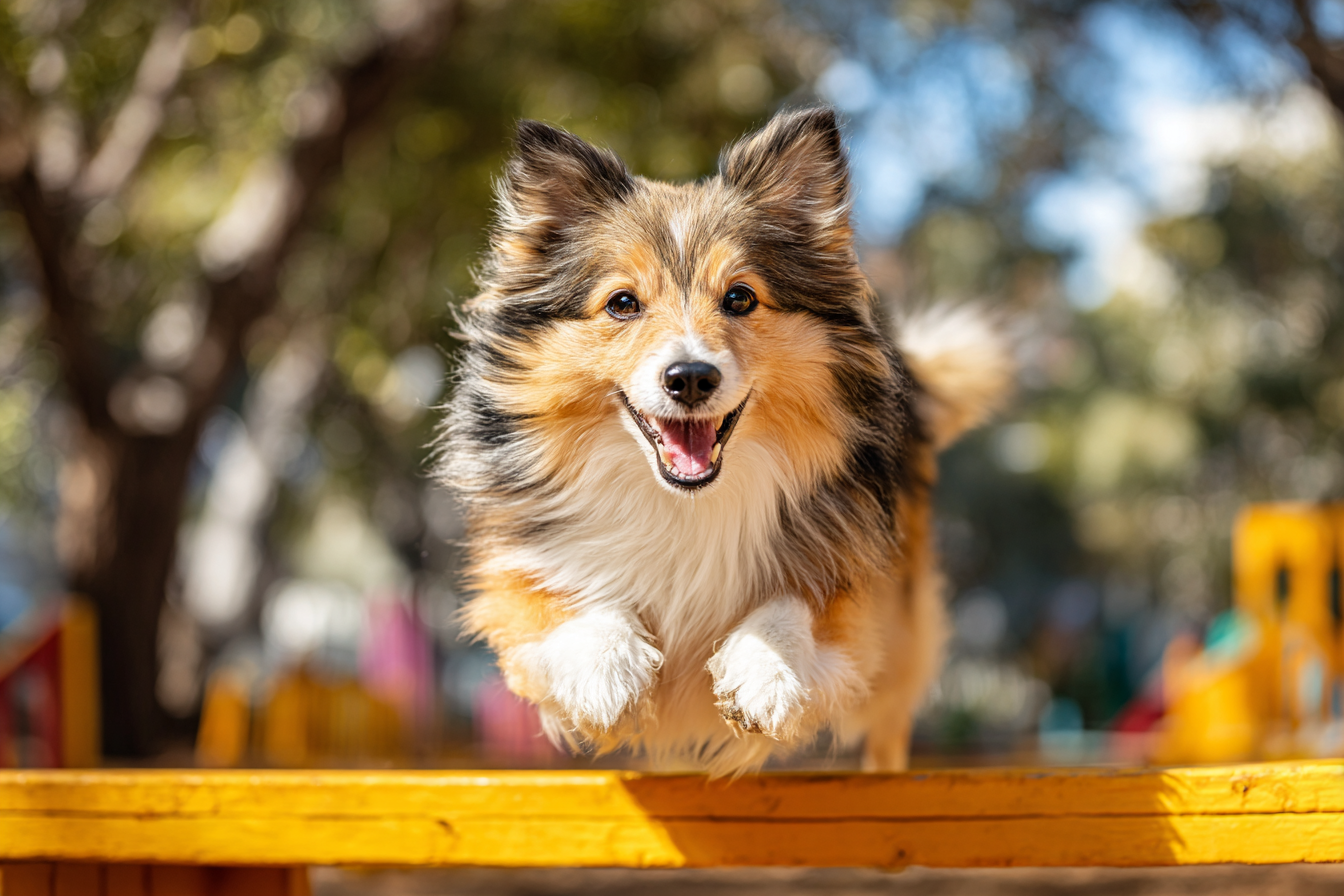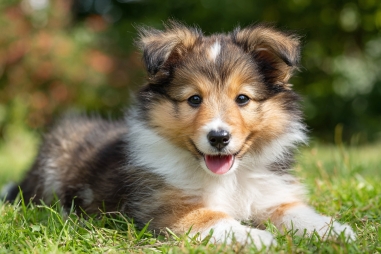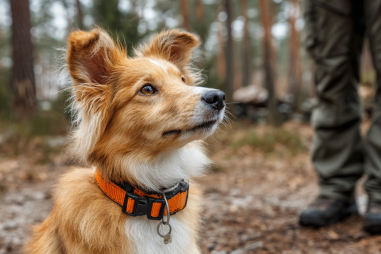Shetland Sheepdogs, affectionately known as Shelties, are a lively and intelligent breed that truly shine in agility training. Their quick minds and nimble bodies make them exceptional candidates for this dynamic sport. If you’re looking to channel your Sheltie’s energy into a fun and challenging activity, agility training is a fantastic choice. Let’s explore how to get started with Shetland Sheepdog agility training to ensure both you and your furry companion enjoy every step of the journey.
Why Agility is Perfect for Shetland Sheepdogs
Shetland Sheepdogs are bred for herding and have an innate ability to move swiftly and think on their feet. Their small to medium size combined with keen intelligence makes them excellent at navigating agility courses. Agility training taps into their natural instincts, offering an outlet for their energy while building a strong bond between dog and handler.
Besides being enjoyable, agility harnesses the Sheltie’s problem-solving skills and quick reflexes. These dogs thrive when given tasks that challenge them mentally and physically, which is exactly what agility courses provide. By starting early and progressing gradually, you’ll help your Sheltie develop confidence and enthusiasm for the sport.
Physical and Mental Benefits of Agility Training
Engaging your Shetland Sheepdog in agility training offers numerous advantages, both for their physical health and mental well-being.
- Physical Fitness: Agility is a full-body workout that improves cardiovascular health, muscle strength, coordination, and endurance. It helps keep your Sheltie lean, flexible, and injury-resistant.
- Mental Stimulation: The complexities of maneuvering through agility obstacles require focus, memory, and quick thinking. This mental workout prevents boredom and reduces anxiety and destructive behaviors.
- Improved Behavior: Regular training instills discipline and enhances your dog’s responsiveness to commands, contributing to better manners outside the course.
- Bonding and Confidence: Working together strengthens the trust and communication between you and your Sheltie, increasing their confidence in new situations.
Basic Agility Obstacles for Shelties
Before diving into training, it’s good to familiarize yourself with common agility obstacles. Each challenge tests different aspects of your dog’s agility, balance, and obedience:
- Jumps: Bar jumps and panel jumps require your Sheltie to leap cleanly without knocking bars.
- Tunnels: Collapsible fabric tunnels test your dog’s courage and ability to follow commands.
- Weave Poles: A series of upright poles your dog must weave through in a specific pattern.
- A-Frame: A steep A-shaped structure your dog climbs up and down, building strength and coordination.
- Dog Walk: Raised planks your Sheltie must walk across with control and balance.
- See-Saw (Teeter-Totter): A plank that tilts when your dog walks across it, teaching balance and confidence on unstable surfaces.
Each obstacle requires specific skills and training techniques, but introducing them slowly and positively ensures your Sheltie will enjoy the learning process.
Step-by-Step Training Plan for Your Sheltie
Starting your Sheltie’s agility journey might seem overwhelming, but a structured approach makes it manageable and rewarding. Here’s a simple plan to get going:
1. Build Basic Obedience
Before jumping into obstacles, make sure your Sheltie has a solid foundation in basic commands like sit, stay, come, and heel. Clear communication is essential for safety and success in agility.
2. Introduce One Obstacle at a Time
Start with easy obstacles like low jumps or the tunnel. Use treats and enthusiastic praise to create positive associations. Keep sessions short and fun to maintain motivation.
3. Practice Handling Commands
Guide your dog through the obstacles using verbal cues and body language. Shelties are especially responsive to subtle signals, so refine your handling skills alongside their training.
4. Combine Obstacles into Small Sequences
Once your Sheltie is confident with individual obstacles, link two or three obstacles together. This helps them learn to transition smoothly from one challenge to another.
5. Increase Complexity Gradually
Add more obstacles, increase heights, or introduce timed runs as your dog’s skills improve. Always celebrate successes to keep enthusiasm high.
6. Provide Plenty of Rest and Rewards
Training can be tiring and stressful if overdone. Ensure your Sheltie has regular breaks and lots of positive reinforcement to foster a love for agility.
Safety Tips During Training
Your Sheltie’s health and safety should be a top priority during agility training. Keep these guidelines in mind:
- Warm Up and Cool Down: Begin sessions with light play or a short walk to warm muscles and end with stretching or calm time.
- Check Equipment Positioning: Ensure obstacles are stable and free of hazards like sharp edges or slippery surfaces.
- Watch for Signs of Fatigue: If your Sheltie is panting heavily or seems reluctant, take a break to avoid overexertion.
- Modify Jumps and Obstacles: Adjust heights and distances according to your dog’s age, size, and physical condition.
- Consult Your Veterinarian: Before beginning, especially if your Sheltie is young, older, or has health concerns, get approval from your vet.
Recommended Equipment for Sheltie Agility Training
Investing in the right equipment will help create a positive and effective training environment:
- Adjustable Jump Bars: Allow gradual height increases tailored to your dog’s size and skill level.
- Portable Tunnels: Lightweight and easy to set up in a backyard or park.
- Weave Poles: Often sold as sets that can be secured into the ground for stability.
- A-Frame and Dog Walk: If space and budget allow, full-size equipment enhances the experience, but small practice ramps can be substituted initially.
- Clicker and Treat Pouch: Useful for positive reinforcement and convenience during training sessions.
- Comfortable Collar or Harness: Should allow free movement without restricting your Sheltie during fast maneuvers.
Incorporating Agility into Everyday Life
Agility training doesn’t have to be restricted to formal sessions or competitions. You can incorporate agility practices into your daily routine to keep the training consistent and fun:
- Use household items like chairs, broomsticks, or boxes to mimic obstacles for practice indoors or in tight spaces.
- Create short courses during walks or visits to dog parks to maintain motivation and mental stimulation.
- Practice simple obedience commands in distracting environments to reinforce control and focus.
- Include games like fetch or hide-and-seek to complement agility skills and nurture your Sheltie’s natural instincts.
This approach not only improves agility skills but also strengthens your bond and keeps your dog mentally sharp throughout the day.
Encouragement for Your Agility Journey
Starting agility training with your Shetland Sheepdog is a wonderful adventure that brings joy, fitness, and companionship. Remember that patience, positivity, and consistency are key to progress. Celebrate every small victory and adapt training to suit your dog’s unique personality and pace. With time, you’ll both experience the thrill of conquering challenges together and the deep satisfaction of teamwork.
Embrace the journey, have fun, and watch your brilliant Sheltie shine in the exciting world of agility!







